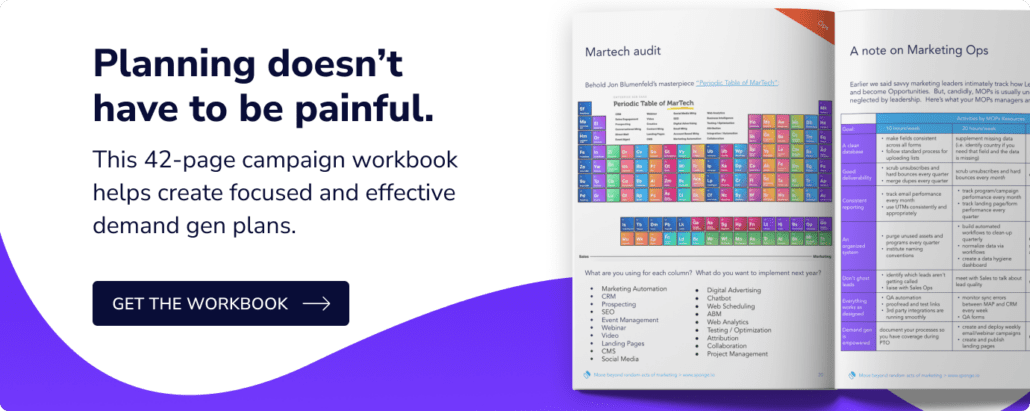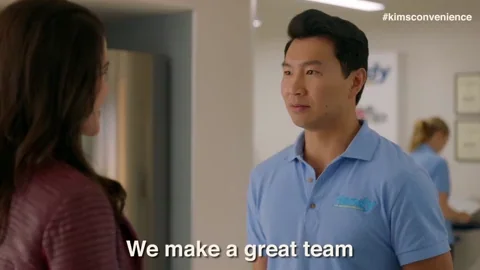This how to guide walks you step by step through creating a successful webinar program.
Webinars are still a big part of the marketing mix, and they’re showing no signs of slowing down.
And by now, most of us know how to create content and webinars that serve a higher purpose than simply promoting products and services. After all, when someone is truly interested in what you’re selling, they’ll find a demo on your website.
A webinar program (and every other kind of content) is about thought leadership, sharing insights, and providing access to expert knowledge that can help people do their job better.
Inbound marketing (synonymous with content marketing in many ways) is not a new concept. Most mature organizations have learned that inbound leads from content promotion can be pretty “top of the funnel” and have a demand waterfall in place to separate the noise from the good stuff.
>> Related: 3 Marketing Programs to Kickstart <<
If you’re great at creating compelling content””promoted through a mix of channels””you’ll certainly stuff the top of your funnel with new contacts, but not necessarily your top prospects.
That’s where lead scoring should kick in, routing leads through your funnel depending on demographic data and behavior.
Demos and trials, for example, are high-value activities that immediately trigger sales engagement, where content downloads, visits to your website, and webinar registrations are usually scored and routed differently.
So here’s how to create a webinar program that does three important things:
- Attracts New Contacts
- Serves Every Stage of the Funnel
- Creates Sales Opportunities
Start with a Three-Part Webinar Series
It doesn’t matter what you’re marketing””a cybersecurity product or healthcare services””you can create a three-part webinar series that casts a wide net at the top and works down to niche topics that indicate more serious interest in what you’re selling.
Let me clarify with a real-world example from a previous company.
They sold analytics software to companies who want to embed analytics in their own products. Their ideal prospect was a product manager””a decision-maker who was charged with product ownership.
Ironically, one of our key challenges was that literally EVERY SINGLE PERSON IN THE WORLD cares about data analytics. We could spin up tasty dataviz content, promote it with Outbrain, and get thousands of downloads.
The problem was conversion: tons of new names in the database but abysmal conversion to opportunities or even to MQLs.
The same was true of webinars. We could easily get 1200 people on a webinar about designing data dashboards, but many attendees were already using Tableau or other competitors’ solutions. They would never be our customer.
So we decided to do a Summer School series of three webinars:
- The first was a “fan favorite” on dashboard design, meant to attract a large number of top of the funnel registrants.
- The second was a little more in the weeds””still offering high-level info””but getting closer to our message on the value of embedding analytics in a product.
- The third was directly targeted to our ideal prospect, offering a go-to-market strategy for an analytics software product. The only people who would care about this are the very people we wanted to talk to.
We knew that the number of registrants would drop dramatically from the first webinar to the third, but we welcomed that drop off.
The registrants of the second and third webinars were perfect for our SDRs to follow up with, and to track carefully through the funnel.
The registrants of the first webinar would drop into Marketo engagement programs for further nurturing.
Webinar Set Up
Assuming you’re using a marketing automation platform integrated with a CRM system, this type of program is relatively easy to set up.
If you’re already running a webinar program, then this is super easy to set up.
In this example, we were using Unbounce for landing pages, along with Marketo and Salesforce (WebEx was our webinar platform, for better or worse).
Like most teams, we would send the first webinar invite two weeks before, a second invite the week before, and various reminders to folks who didn’t open and so on.
So the question is, do I create one landing page to promote the series or separate landing pages for each webinar in the series?
The answer is, do all the things.
To get the most bang for your buck, create a landing page for the series (where folks can register for as many as they want), and create separate landing pages for each webinar in th program. This way you have flexibility in how you promote, and you’re still able to send an email invite before each one.
This also gives you the ability to experiment with promotion and channels: maybe you’d promote the second and third (more in-the-weeds) webinars through channels where you can be more targeted (LinkedIn sponsored content and InMail, for example).
Since these webinars are designed to attract your ideal prospect, think about the watering holes where they’d likely consume content.
If you need ideas or practical guidance on how to set up a program like this, talk to us. Here at Sponge, we love to talk demand gen, campaigns, and marketing ops.
Webinar Follow Up
OMG the follow-up.
As I mentioned, the drop off in registrants from the “fan favorite” webinar to the third””more highly targeted one””will probably be pretty big.
And that’s ok.
This program is meant to attract a lot of new names at the top of the funnel, and select out your ideal prospects at the bottom.
Here are some tips to drive engagement and opportunities from your webinar series:
- Generate a list of people who register for all three webinars.
- Craft an email or call script for your sales development team. Since the people on this list are signaling a high level of interest, the goal should be to set a meeting. At the very least, provide an introduction, and more info about your products.
- Track the people who attend and craft a special follow up.
- Track the people who watch the recording and craft a special follow up.
- Send future webinar invites from the rep, making the invite feel more personal (this can be automated in any system).
- Remove these folks from any “standard” nurture program, and serve the middle of the funnel, more product-specific content.
- Consider a gift card incentive to drive demos after the webinars.
- Track carefully and watch sales opportunities roll in!
And before you launch the program, make sure your SDRs and sales reps know about it:
- Send them the landing page and brief them on the topics.
- Have them register so they experience the process as their prospect would.
- Offer to set up notifications of registrations or attendees so they can work the leads more personally.
- Stay on top of marketing and sales follow up during and after the series to ensure you’re not stepping on each other’s toes or that nothing is falling through the cracks.





